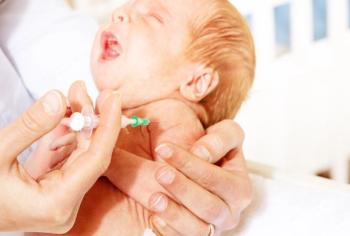
It Takes a Village to Keep Kids Slim
BOSTON -- When an entire community bands together to increase exercise and improve the diets of children in first through third grade, the program can prevent and reverse childhood obesity.
BOSTON, May 11 -- When an entire community bands together to increase exercise and improve the diets of children in first through third grade, the program can prevent and reverse childhood obesity.
It takes schools, teachers, parents, city officials, school food service companies, and community groups, according to Christina Economos, Ph.D., of the Friedman School of Nutrition Science and Policy at Tufts University here.
Such a coordinated program can produce about a one-pound reduction in weight gain over eight months for an eight-year-old child, she and colleagues reported in the May issue of Obesity.
They came to this conclusion on the basis of first-year results in Somerville, Mass., of a three-year controlled prospective trial comparing three Massachusetts communities.
Over a whole group of children, such a seemingly small reduction in weight gain "would translate into large numbers of children moving out of the overweight category," Dr. Economos said.
The other two communities, which were demographically similar, did not get the intervention, and were used as controls during the experiment, the researchers said.
The primary outcome of the program -- dubbed "Shape Up Somerville: Eat Smart. Play Hard" -- was change in the body mass index z-score, a measure of how far an individual differs from the mean, the researchers said.
The program included, among other things:
- Healthier foods in school cafeterias.
- An after-school curriculum that included creative cooking, cooperative games, yoga, soccer, and field trips, including a farm visit to learn how food is grown.
- An in-class curriculum that included daily exercise sessions and weekly nutrition and physical activity lessons.
- Parent forums, newsletters with health tips, walking contests, traffic calming campaigns, and coupons for healthy foods.
- School nurses, pediatricians, and family physicians were trained to address issues of overweight and obesity among children.
"If this seems like a very large number of activities, it is," Dr. Economos said. "But we believe that it is the sum of these efforts that will guide children to form habits that prevent excess weight gain as they move into their teenage and adult years."
The experiment involved 1,178 children, including 385 from Somerville. Their body mass indices were calculated at the beginning of the 2003 school year (September/October) and again at the end of the year (May/June).
At baseline, 44% of the Somerville children were above the 85th percentile for BMI z-score, compared with 36% and 43% in the control communities, the researchers found. Children above the 85th percentile are considered "at risk for overweight," the researchers said.
At the end of the school year, the BMI z-score in Somerville had decreased by 0.1005, compared with the other two combined, a difference that was statistically significant at P<0.001.
The Somerville reduction was also significant when compared to each of the control communities individually, the researchers said.
The difference translates to slightly less than a pound of weight for an eight-year-old child who began in the 75th percentile of BMI z-score, Dr. Economos and colleagues said.
Because the intervention requires a large number of interactions between researchers and the community, the study was controlled but not randomized, the researcher said.
Another limitation is that the study population was only part of the eligible students in each community, they said.
The program was also difficult to implement, Dr. Economos said, because researchers had to spend several years building relationships with the community before it could start.
Nonetheless, she said, "creating programs like (Shape Up Somerville) for communities is essential as the U.S. obesity rates have more than tripled in children in the last three decades."
Newsletter
Enhance your clinical practice with the Patient Care newsletter, offering the latest evidence-based guidelines, diagnostic insights, and treatment strategies for primary care physicians.
























































































































































































































































































